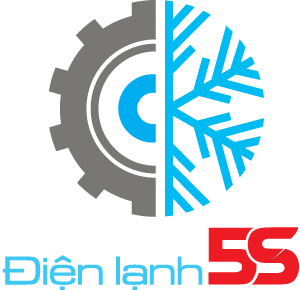Infrastructure as Code – Automating IT resources in the cloud kiến thức mới năm 2023

Infrastructure as Code – Automating IT resources in the cloud – Cập nhật kiến thức mới nhất năm 2023
Bạn đang xem: Infrastructure as Code – Automating IT resources in the cloud
These processes can be automated with Infrastructure as Code (IaC). Server, storage and network connections are provided using programming techniques. The desired infrastructure is described in a script. In this way, infrastructure as code can also encode complex provisioning processes. The resources defined in the descriptions or blueprints are automatically provided, managed and released.
Benefits of Infrastructure as Code. Key benefits of infrastructure as code are accuracy, repeatability, and speed. Once a particular configuration has been tested, it can be “deployed” by a script in the same way at any time – often within a few minutes. The servers started in this way are always configured in the same way. With a specific code, many resources can be created, changed or expanded quickly and automatically. This includes, for example, test systems for developers or additional servers that are only active for a short time and absorb peak loads.
Almost all IaaS providers offer their customers interfaces or tools for programming the infrastructure. The admins can use many techniques of application development, for example version management of the “source texts”. Versioning allows changes to be traced back and, if necessary, canceled again. This makes it easier to fix misconfigurations. In addition, the individual projects can be duplicated and serve as the basis for a new set of servers.
With the complete archiving and versioning of the infrastructure code, companies have a precise insight into the current status of their infrastructure. Integration testing then provides hard numbers on which versions of the blueprints work with specific versions of the infrastructure. This ensures that the versions are always compatible, for example as soon as the system requirements change.
IaC and DevOps complement each other. Infrastructure as Code convinces many IT specialists, because the infrastructure traditionally thought of as hardware becomes software. This means that the scripts or configuration files can also be made available to other admins, developers, departments or teams very easily. This increases the reusability of settings once they have been made and ultimately makes them independent of people. In short: With IaC, an IT team can set up and provide new, consistent systems, infrastructures or even virtual data centers in the shortest possible time.
Xem thêm: Công Ty: Máy Lọc Nước Pure Thái Lan, Máy Lọc Nước Pure Nhập Khẩu Thái Lan
This makes the concept particularly suitable for use in a DevOps environment (“Development & Operations”), which ensures a closer link between software development and IT operations. The primary aim is to make the cooperation between admins and developers more efficient. The two concepts work together perfectly, as the programming of the infrastructure makes typical system administration tasks accessible to software developers.
An important aspect of DevOps is »Continuous Delivery«, a generic term for a collection of procedures used to automate and improve the delivery or delivery of software. This gives developers a tool with which they can trigger a process chain “on command” that automatically tests, integrates and rolls out finished releases. In agile development, DevOps helps to deliver software releases in quick succession – sometimes even several times a day.
Cloud migration made easy. Infrastructure as Code allows the formal description of a company’s entire IT and cloud landscape. This makes it possible to precisely define and reproducibly provide all necessary (and previously used) computing resources. The code then contains all the information about the type and scope of the hardware, software and middleware. It also saves the work process that is necessary to achieve this state, such as additional processes to be started or resources to be reserved.
The great opportunity for infrastructure to »become software« is the possibility of first precisely defining all resources and then configuring them in one fell swoop. This allows companies to plan the structure of their IT infrastructure over the longer term and record it in the source code as a reference at any time. This also supports companies with cloud migration, for example of parts of the IT infrastructure to other public cloud services.
What sounds so simple here is often a major hurdle in practice: business processes have to be described and transferred to the cloud in order to successfully generate added value. With a cloud platform and an infrastructure code adapted to the processes, companies create the framework for their digital ecosystem. Infrastructure as Code overcomes this hurdle because infrastructure provisioning is efficient and reproducible.
Companies are looking for flexibility and efficiency and are therefore making their way to the cloud. But to get the most out of them, resources need to be agile and scalable. Infrastructure as Code is one solution. An automated infrastructure using code results in a fixed library of infrastructure building blocks that developers only have to use. In the end, this not only saves time but also leads to stable consistency within the infrastructure.
Kết thúc
Ngoài các bài viết tin tức, bài báo hàng ngày của https://www.kythuatcodienlanh.com/, nguồn nội dung cũng bao gồm các bài viết từ các cộng tác viên chuyên gia đầu ngành về chuỗi kiến thức kỹ thuật điện, điện lạnh, điện tử, cơ khí,…,.. được chia sẽ chủ yếu từ nhiều khía cạnh liên quan chuỗi kiến thức này.
Bạn có thể dành thời gian để xem thêm các chuyên mục nội dung chính với các bài viết tư vấn, chia sẻ mới nhất, các tin tức gần đây từ chuyên gia và đối tác của Chúng tôi. Cuối cùng, với các kiến thức chia sẻ của bài viết, hy vọng góp phần nào kiến thức hỗ trợ cho độc giả tốt hơn trong hoạt động nghề nghiệp cá nhân!
* Ý kiến được trình bày trong bài viết này là của tác giả khách mời và không nhất thiết phải là SEMTEK. Nhân viên tác giả, cộng tác viên biên tập sẽ được liệt kê bên cuối bài viết.
Trân trọng,
Các chuyên mục nội dung liên quan







